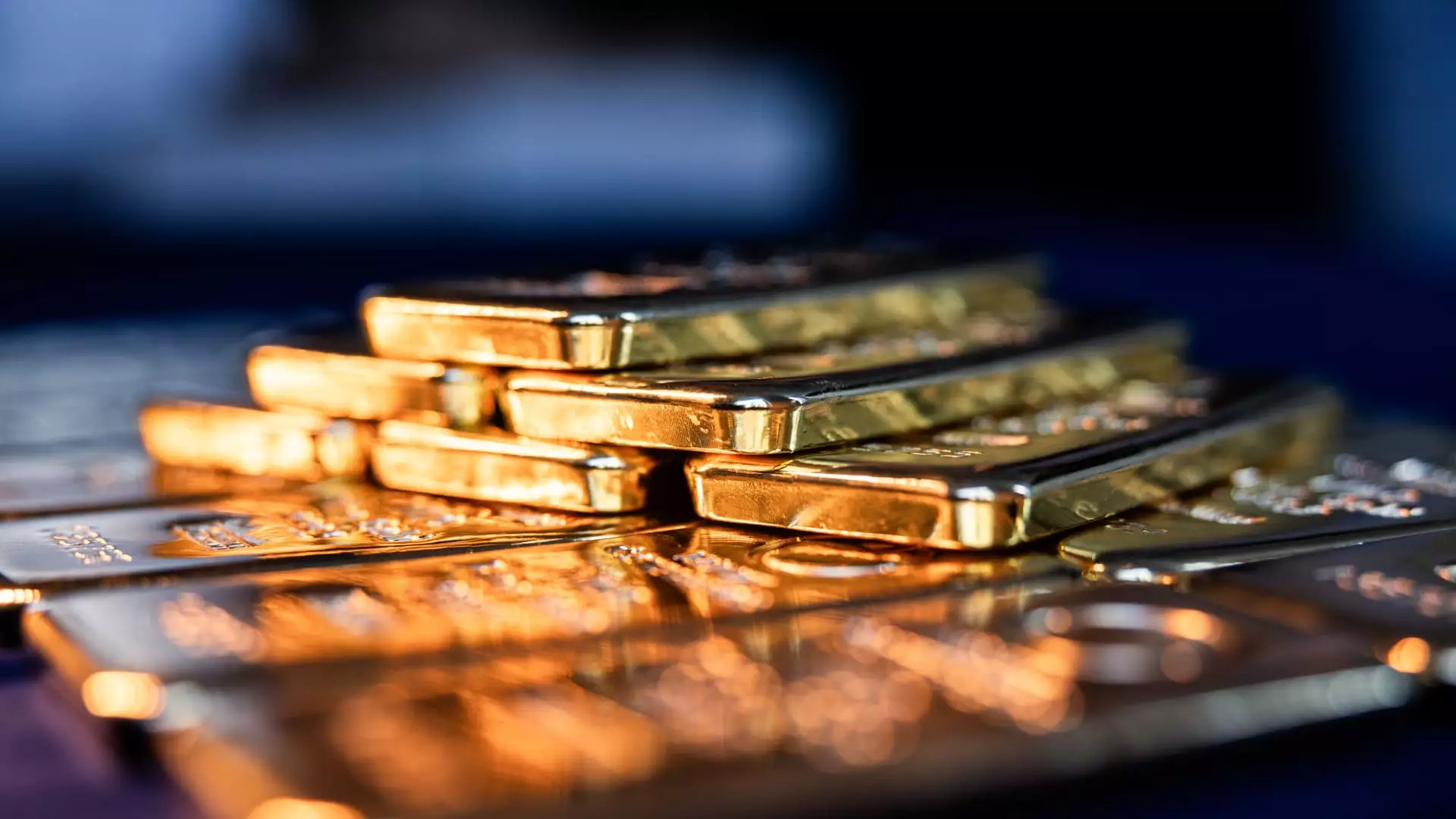Gold has long maintained its status as a secure refuge for investors, particularly during tumultuous periods in global politics and finance. As fears of a potential global trade war permeate the economic climate, gold prices have surged amidst uncertainty. With the price of gold now surpassing $3,000 per ounce, this precious metal seems to be performing as anticipated for those seeking stability amid chaos. However, such rapid escalation naturally brings a wave of skepticism from seasoned analysts warning that these soaring prices may have reached their zenith.
Esteemed figures in the financial sector, like Sameer Samana from Wells Fargo, assert that the current euphoria surrounding gold is a cause for caution. Investors are advised to be wary of chasing returns that may not be sustainable. This sentiment echoes a broader concern: Are we on the cusp of gold’s greatest days—or are we merely basking in fleeting optimism?
The Market Dynamics: A Dance of Tariffs and Trade
In the current economic landscape, tariffs imposed by global powers significantly influence gold prices. The United States, under President Trump’s administration, recently engaged in escalating tariff disputes with China. Such tension between these two commercial titans creates a precarious environment that typically spurs investors toward gold as a hedge against economic misfortune. However, it’s vital to draw a distinction between mere anxiety-driven investing and well-strategized portfolio management. While gold serves as a beacon of hope during downturns, history indicates that gold’s protective qualities are often overstated during genuine recessions.
Indeed, while analysts like Jordan Roy-Byrne predict further potential for gold growth, they also emphasize the necessity of a measured approach. Real investment wisdom lies not simply in the pursuit of gold during its peak moments but understanding the cyclical nature of its value. Investors should keep a clear eye on how global tensions might shift and thus affect gold’s future trajectory.
Gold ETFs: A Strategic Approach to Investing
For the investor seeking a balanced portfolio, gold exchange-traded funds (ETFs) offer a practical alternative to physically holding the metal. Samana’s comments underscore this reality; for most, a gold-backed ETF is a more straightforward entry point into this market than dealing with the complexities and costs associated with physical gold. The likes of SPDR Gold Shares (GLD) and iShares Gold Trust (IAU) are popular for diversifying investments while tapping into gold’s potential.
However, analysts also urge caution regarding the weight one places on gold within their overall investments. A recommendation of capping gold exposure to no more than 3% speaks volumes about the need for balance in investment strategy. In times of inflated gold prices, it’s easy to get caught up in the mindset of profit, but a grounded perspective remains crucial.
Physical Gold: Investments Beyond Monetary Value
The tangible allure of physical gold—be it coins, bars, or fine jewelry—can’t be discounted, especially in times of economic volatility. People often feel a psychological comfort when they hold a physical asset rather than abstract stocks or bonds. Yet, I question the rationality behind purchasing physical gold purely as an investment during uncertain times, unless one has an overwhelming fear of financial collapse. In such cases, it is essential to contemplate whether the pragmatism of holding physical gold outweighs the responsibilities of its maintenance.
Interestingly, gold jewelry, particularly high-quality pieces, merges investment with personal enjoyment. The craftsmanship involved in creating beautiful jewelry adds a layer of intrinsic value, serving both as adornment and potential financial asset. When selected carefully, pieces from renowned brands could withstand the test of time, making them sound investments in their own right.
The Psychological Factor in Investment Choices
The cultural resonance of gold as a store of value dates back centuries. Not just a mere asset, gold embodies a historical connection to wealth and security enjoyed across generations. Tim Schmidt’s insights into consumer behavior reflect a prevalent trend: Amidst market upheaval, many seek the physical reassurance of gold, leading to spikes in sales for retailers. Such dynamics raise profound questions around the psychology of investing: Do we choose gold because of its past performance, or is there a deeper, almost primal urge for security and permanence?
Investors, particularly those with substantial assets, often utilize gold as part of a diversification strategy—making it a means of coverage in turbulent waters. Yet, as Winnie Sun from Sun Group Wealth Partners aptly points out, mere exposure to gold doesn’t equate to wise financial planning. Maintaining higher cash reserves and being adaptable is a more prudent approach during precarious times.
Financial wisdom is not just about chasing trends aggressively; it’s about weighing the fundamentals against the various facets of human behavior that influence our choices as we navigate uncertain markets. The gold market may glisten with promise, yet it’s crucial that we approach it with tempered enthusiasm and well-reasoned strategy.

